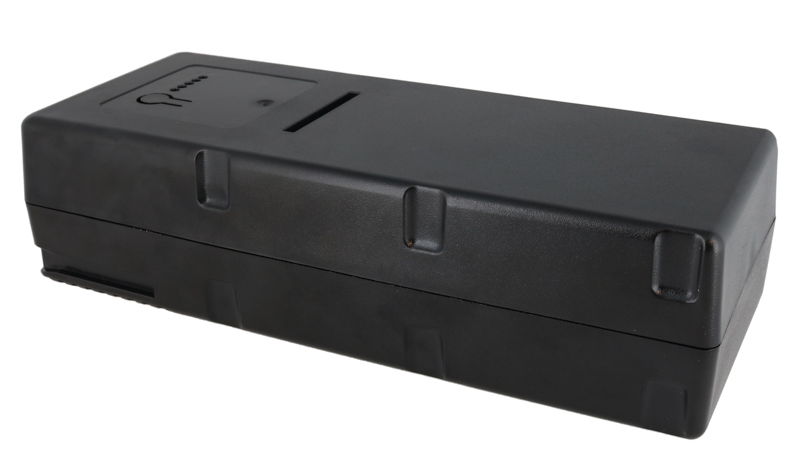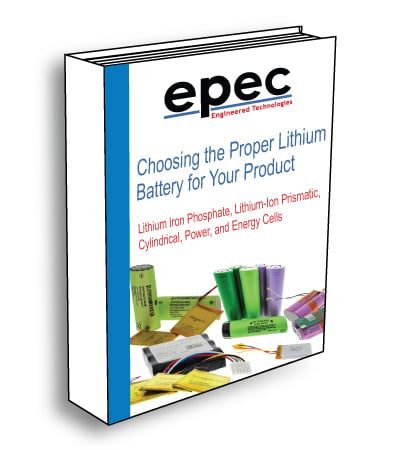Custom Battery Packs for Portable Electronic Devices
Mobile electronic devices commonly employ custom rechargeable battery packs as the size of electronic components is continually reduced and processing power is increased. High-performance lithium-ion batteries are the choice for many of these devices as they are smaller and lighter than lead-acid, NiMH, and NiCd batteries. Furthermore, they demonstrate higher energy density, higher availability, longer service life, and significantly more cycle times. The development and availability of ever smaller and lighter lithium cells over the past few years has helped high-tech devices deliver high performance while maintaining their ability to withstand extreme elements, shock or vibration, and harsh environments.
Ruggedized Manufactured Battery Packs
Since portable devices are often subjected to being dropped while being transported and when in use, the battery packs used in these devices need to be ruggedized which can be different for commercial, medical, industrial, and mil-aero applications.

Ruggedized battery packs are manufactured to handle physical exposure to water, dust, and other contaminants, as well as being shockproof and drop-proof. Along with the physical exposure, most custom lithium battery packs act as radiated sources of Electro-Magnetic Interference (EMI). The primary problem with the occurrence of EMI is disruption or reduction of performance of electronics. This can be severely damaging when working with wireless communication designs, where EMI can cause attenuation losses in signal strength and noise during transmission.
Portable Battery Pack Requirements and Challenges
These specialized high-tech devices will require a battery pack with unique power, size, enclosures, custom connectors, safety circuits, smart BMS circuits, cell balancing, fuel gauging , IP rating requirements, or intrinsic safety. Lithium batteries offer longer life due to their high charge density, which can offset the higher initial cost when looking at the total cost of ownership for the user of a portable device.
Some specific challenges that we will work with our customers to help them navigate at the design stage to ensure that their custom battery pack will exceed their portable device power requirements include:
- Portable electronic devices generally operate utilizing a constant power type discharge, this means that the current required will increase as the battery discharges to maintain the constant power (P=V*I). This effect in most battery systems will mean a quicker and faster rate of voltage decay as the battery discharges. This can affect the system runtime and ability to react in adequate time to inform the user of power loss.
- Since a battery is an electrochemical system, it is a chemical system first, which means that the environmental operating environment will influence this performance. Understanding that a lithium battery will be less able to respond to higher currents in lower temperatures since the rates of reaction are slowed needs to be part of the design consideration. Lower temperatures are usually seen as depressed voltage due to higher internal resistance whereas at higher temperatures lifecycle of the battery is decreased over time. In a study by Scientific Reports, it was found that when a lithium battery is charged at 113 degrees versus 77, the lifecycle degradation was much more significant at the higher temperature. For the first 200 cycles, the battery performance only degraded 3.3% at 77 degrees; at 113 degrees the performance decreased by 6.7%.
- Devices, even when powered down, require small amounts of current to power memory, switches and component leakage. This number is very important when designing a system that will use a primary battery that cannot be recharged, as one does not want the battery to fully discharge while the system is off. This value becomes critical when defining the shelf-life storage characteristics of a battery when installed in a device and specifying battery recharge requirements.
- Protection circuitry must be designed into any custom lithium-ion battery pack to prevent the cells in the battery from overcharge and over-discharge conditions and high currents or short circuits at a minimum. The circuit usually consists of a protection IC, several FET devices, and resistors to ensure that any potential thermal runaway can be avoided. One must recognize that the active circuits in custom lithium-ion battery packs continually draw power causing the battery to constantly discharge slowly, and while only in the microamp current range it still must be monitored and regulated.
Today’s portable device technology, along with improvements in battery technology, has enabled us to create products that would not have even been possible even 5 years ago. Due to the fact that technology is changing so fast, not only in terms of battery cell performance, but all of the electronics available to manage the circuitry, require that you have an experienced partner to ensure that you get exactly what your device needs.
Power For Portable Devices
Power your portable devices with ruggedized custom battery packs. Ensure performance and reliability in extreme conditions. Get a free consultation today and meet your portable device power requirements.
Request a Quote Request Design Support Request More Information


